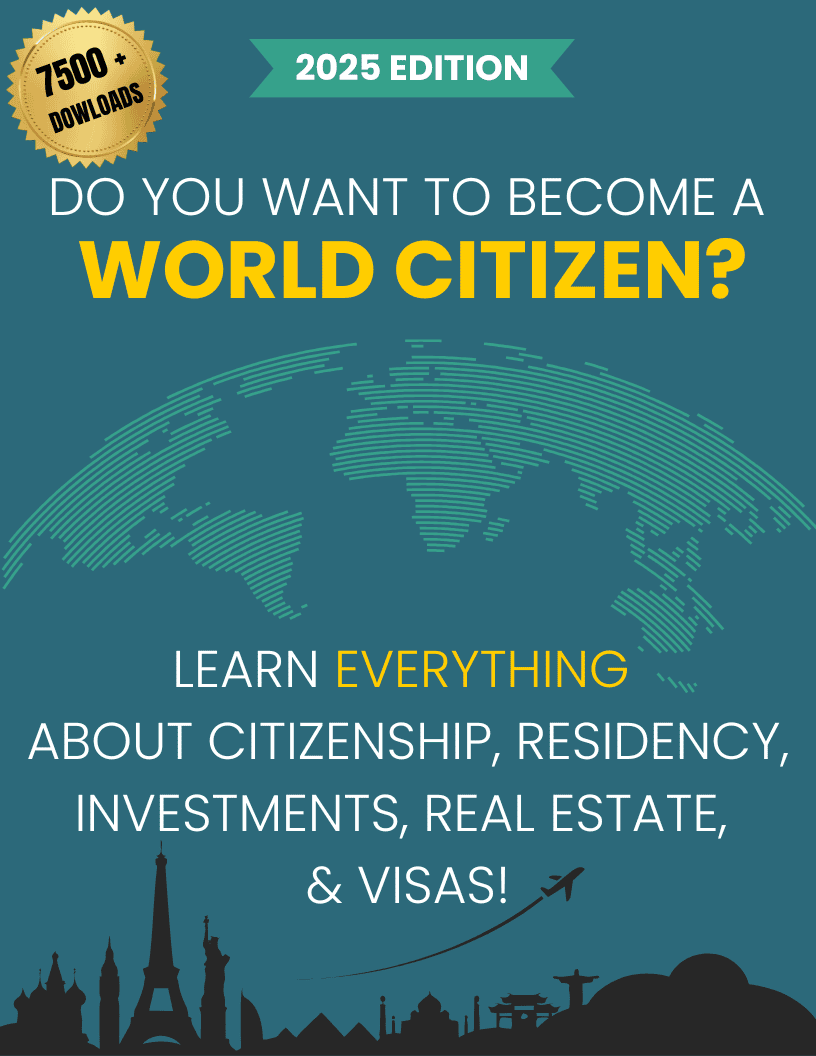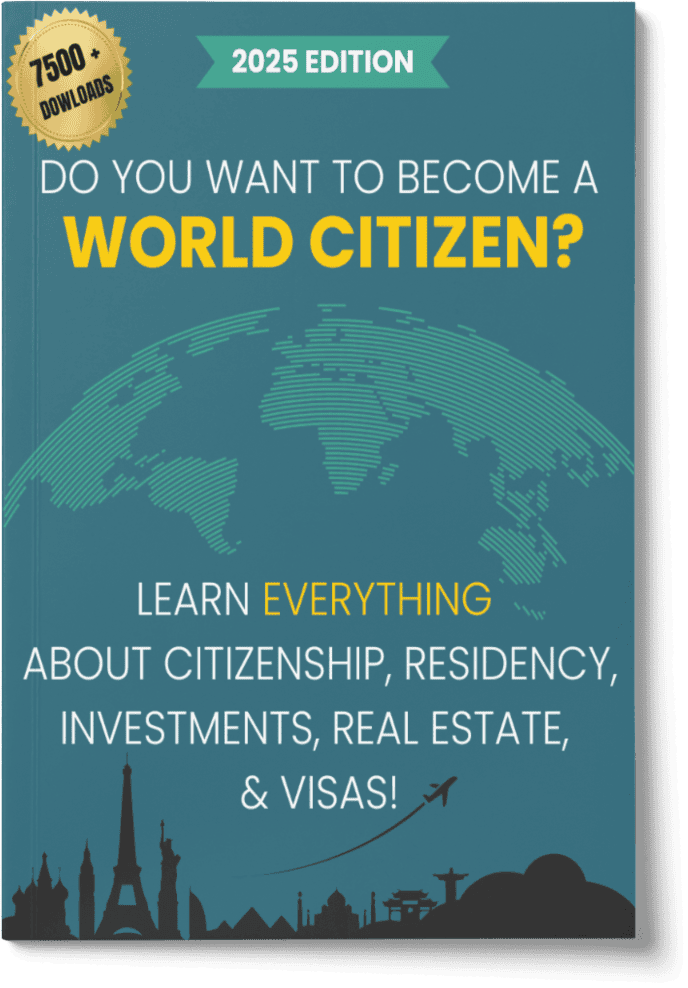Do I Qualify for a US Student Visa?
Boost Your Freedom Without Compromise.
- Who offers the CHEAPEST program available.
- Who offers the BEST program available.
- What you need to qualify?

- The US offers three primary types of student visas: F-1 for academic students, J-1 for exchange visitors, and M-1 for vocational students, each catering to different educational pursuits.
- To apply for an F-1 Student Visa, candidates must be accepted by a school approved by the Student and Exchange Visitor Program (SEVP), prove sufficient financial support, and demonstrate intent to return home after studies.
- F-1 visa students have limited work options, including on-campus employment, Curricular Practical Training (CPT), Optional Practical Training (OPT), and Science, Technology, Engineering, and Mathematics (STEM) OPT extension.
- Family members (spouse and unmarried children under 21) of F-1 and M-1 students can accompany them on an F-2 or M-2 visa, while J-1 visa holders' dependents can come on a J-2 visa, with certain work rights under specific conditions.
- Maintaining legal student status in the US requires enrollment in a full course of study, adherence to work restrictions, and keeping the student visa documentation up to date, with extensions available as needed.
Picture this: you're on the brink of diving into the vibrant, bustling world of American academia, but before you can immerse yourself in campus life and late-night study sessions, there's a hurdle to clear—the US student visa.
Fear not!
In This Article, You Will Discover:
This guide is your golden ticket, offering you the inside scoop on navigating the maze of F-1, J-1, and M-1 visas with the grace of a seasoned traveler.
Let's get cracking…
*Disclaimer: All amounts quoted in this article were correct and accurate at the time of publication and may have shifted since.
- Who offers the CHEAPEST program available.
- Who offers the BEST program available.
- What you need to qualify?
 Free Consultation
Free Consultation Easy to Use
Easy to Use 100% Safe & Secure
100% Safe & Secure
US Student Visas: An Overview
The United States offers various visa options for students worldwide who wish to pursue their studies at its educational institutions.
The most common types of student visas are the F-1, J-1, and M-1 visas.
Here are the finer entails you need:
Duration
The duration of a US student visa depends on the visa type and the length of the study program.
For F-1 and M-1 visa holders, the visa is typically issued for the duration of the academic program plus an additional 60 days for F-1 students and 30 days for M-1 students to prepare for departure from the US or to transfer to another school.
J-1 visa durations vary greatly depending on the specific program's length, but similar grace periods for departure are also allowed.
Eligibility Criteria
Only some people can apply for this type of US visa.
Eligibility requires that the applicant:
- has received approval from an SEVP-approved institution.
- has proved they have the financial resources to support themselves during their stay.
- has demonstrated they intend to return home after completing their studies.
- meets the specific requirements of the visa category they’re applying for (F-1, J-1, or M-1).
Rules & Regulations
Students on a US visa must adhere to several rules and regulations to maintain their status.
Rules and regulations include:
- Enrolling in a full course of study.
- Limiting on-campus employment to 20 hours per week while school is in session.
- Not engaging in off-campus employment without authorization.
- Reporting any changes in address or study program to their designated school official (DSO).
- For F-1 students, staying within the 60-day grace period post-completion of their study program is required unless they’ve applied for Optional Practical Training (OPT) or another visa status.
Costs & Fees
Our WorldPassports experts have done the research regarding cost for you.
The costs and fees associated with obtaining a US student visa include the following:
- SEVIS fee: Required for all F-1, J-1, and M-1 visa applicants, the SEVIS I-901 fee is currently US$350 for F and M visa applicants and US$220 for most J visa applicants.
- Visa application fee: Also known as the MRV fee, it’s US$160 for most applicants.
- Additional costs: These may include fees for visa issuance, depending on the applicant's nationality, and costs related to gathering required documentation or travel expenses for the visa interview.
3 Types of US Student Visas
The United States offers several types of visas for international students, with the most common being the F-1, J-1, and M-1 visas.1
Each visa caters to different educational pursuits and has specific requirements and conditions.
Scroll down to learn more.
F-1 Visa
The F-1 visa is the most common type of student visa for those wishing to engage in academic studies in the US.
This includes university or college students, private elementary schools, high schools, and other institutions, including language training programs.
Furthermore
F-1 students must maintain a full-time course load and can work on campus for limited hours.
They may also be eligible for certain types of off-campus employment under specific conditions, such as Optional Practical Training (OPT) or Curricular Practical Training (CPT).
J-1 Visa
The J-1 visa is designed for students, scholars, and exchange visitors participating in programs that promote cultural exchange, especially to obtain medical or business training within the US.
Participants often use it in exchange visitor programs, including visiting scholars, au pairs, interns, and more.
Take note
J-1 visa holders are subject to the 2-year home-country physical presence requirement, which sometimes requires them to return to their home country for 2 years after completing their program.
M-1 Visa
The M-1 visa is for students who wish to pursue non-academic or vocational study or training in the United States.
M-1 students must be enrolled in a full-time vocational program and can’t work during their studies.
Unlike the rest…
M-1 students have a fixed time limit for their stay in the US, which is usually 1 year or for the duration of the program plus 30 days, whichever is shorter.
Preparing for Your US Student Visa Interview
When applying for a US student visa, you must go to a visa interview.
Here’s our expert advice:
How to Schedule Your Visa Interview
To schedule a visa interview, applicants must complete the online visa application form (DS-160), pay the visa application fee, and then contact the US Embassy or Consulate in their home country to schedule an interview.
The availability of interview appointments can vary by location, so it's advisable to apply as early as possible.
Common Visa Interview Questions
During the interview, the consular officer may ask questions to determine your eligibility for a student visa.
Common questions include:
- What are you planning to study in the US?
- Why did you choose this US school or program?
- How will you fund your US education?
- What are your plans after completing your studies in the US?
- Do you have family or ties to the US?
Tips for a Successful Visa Interview
We want you to go into your US student visa interview feeling confident and your best self.
So, here are our tips:
- Be prepared: Know the details of your study program and how it fits into your career plans.
- Be concise: Answer questions clearly and directly.
- Prove home country ties: Demonstrate strong ties to your home country to show that you intend to return after your studies.
- Financial readiness: Be ready to provide evidence of your financial ability to cover your education and living expenses.
- Practice English: If the interview is in English, practicing can help demonstrate your proficiency.
Rights & Benefits
Holding a US student visa offers a range of rights and benefits, enhancing international students' academic and cultural experience.
Take a look at our findings.
Living in the US
International students in the US can enjoy a vibrant campus life with access to numerous academic resources, libraries, and recreational facilities.
Students are encouraged to engage with community events and cultural exchange programs to enrich their stay.
Living in the US also allows students to experience American culture, from its diverse food to its national parks and historical sites.
Work Opportunities
Work opportunities differ for every type of US student visa.2
Here’s what we've found:
- F-1 visa holders: They may work on campus up to 20 hours per week during the academic term and full-time during breaks. They may also be eligible for Optional Practical Training (OPT) or Curricular Practical Training (CPT), which allows for off-campus employment in their field of study.
- J-1 visa holders: They may work on or off campus for up to 20 hours per week while classes are in session, provided the work is related to their academic program and approved by their program sponsor.
- M-1 visa holders: Generally, they aren’t allowed to work during their studies, except for practical training after completing their studies.
Bringing Family Members
Holders of F-1 and J-1 visas can apply for F-2 and J-2 visas, respectively, for their dependents (spouses and unmarried children under 21) to live with them in the US.
In some cases, J-2 visa holders may obtain permission to work.
Challenges & Pitfalls
The US student visa process can be tricky if you’re unprepared.
You don’t have to worry; we’ve got you covered.
You may encounter several obstacles along the way, from administrative delays to the risk of visa denial.
Let’s take a look.
Delays
Visa processing times can vary significantly depending on the time of year, the specific US embassy or consulate handling the application, and the applicant's country of origin.
Common causes of delays include:
- High volume of applications during peak periods
- Incomplete applications or missing documentation
- Additional administrative processing
To minimize delays, applicants should:
- apply early, well in advance of their intended start date.
- ensure their application is complete and all documentation is accurate.
- follow up with the embassy or consulate if significant time has passed without an update.
Denials
US student visa denials can occur for various reasons, including failure to prove financial stability, insufficient ties to the home country, or application errors.
If your US student visa is denied, the following will happen:
- The consular officer will provide a reason for the denial.
- Applicants may reapply if their circumstances have changed, or they can provide additional information addressing the denial's reason.
You should review the reasons for denial carefully and make any necessary adjustments before reapplying.
Maintaining Your Student Visa Status
Maintaining your visa status is essential once you’re a student in the United States.
Failure to comply with the terms of your visa can lead to serious consequences, including deportation.
Key requirements include:
- Enrolling in a full-time course load
- Not engaging in unauthorized employment
- Keeping your passport valid
- Reporting any change of address or academic status to your Designated School Official (DSO)
When preparing to make any major changes to their study plans, like transferring to a different university or changing their major, international students should regularly speak with their DSO to ensure they follow all rules and regulations.
Extending & Changing Your Visa Status
If you want to stay longer or have to study another year, you need to know the terms and conditions applicable.
We’ve compiled the ins and outs for you.
Visa Extension Conditions
Students may apply for a visa extension if they can’t complete their course of study before their visa expires.
This requires approval from their educational institution and, for F-1 students, may involve filing for an extension through the US Citizenship and Immigration Services (USCIS).
Changing Your Educational Institution
Students wishing to transfer to another institution must notify their current and prospective schools.
F-1 students must complete the transfer process within specific time frames and update their SEVIS record through their DSO.
Transitioning From a Student Visa to Another Visa
Students may wish to change their status to another visa type after completing their studies, such as the H-1B visa for employment.
This requires finding a sponsor, applying with USCIS before their current visa expires, and maintaining their status.
Common Questions
What Are the Differences Between the F-1, J-1, & M-1 US Student Visas?
How Do I Apply for a US Student Visa?
What Are the Financial Requirements for a US Student Visa?
Can I Work in the US With a Student Visa?
How Long Can I Stay In the US After My Studies Are Finished?
Which Is the Best Student Visa in the US?
How Long Is the Processing Time for a US Student Visa?
In Conclusion
And there you have it—a comprehensive tour through the ins and outs of securing your US student visa.
As you step forward, visa in hand, ready to conquer the classrooms of America, remember: this is more than just an educational quest.
Embrace the challenge, savor the experience, and make every moment of your American journey count.
If you’d like to investigate other student visa options worldwide, check out our comprehensive guide.
Learn More: Student Visas
- Who offers the CHEAPEST program available.
- Who offers the BEST program available.
- What you need to qualify?
 Free Consultation
Free Consultation Easy to Use
Easy to Use 100% Safe & Secure
100% Safe & Secure







